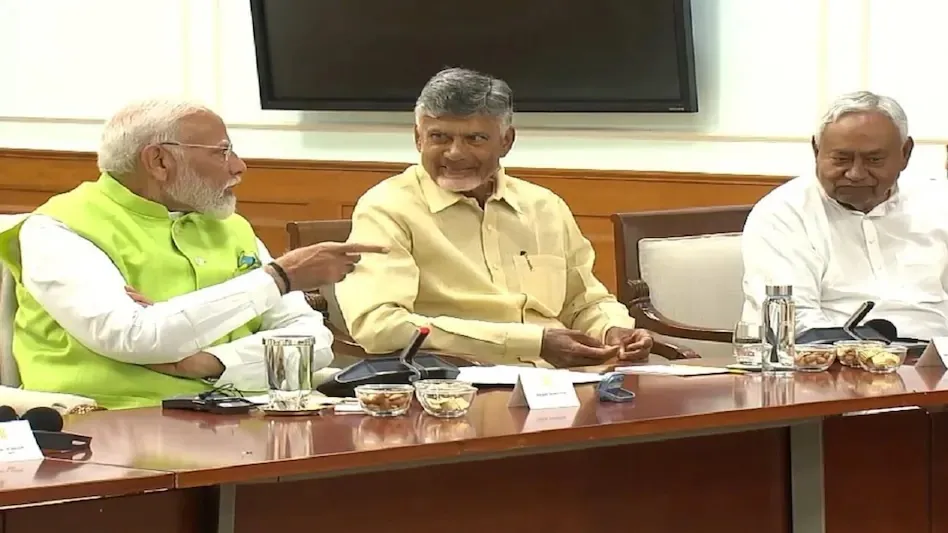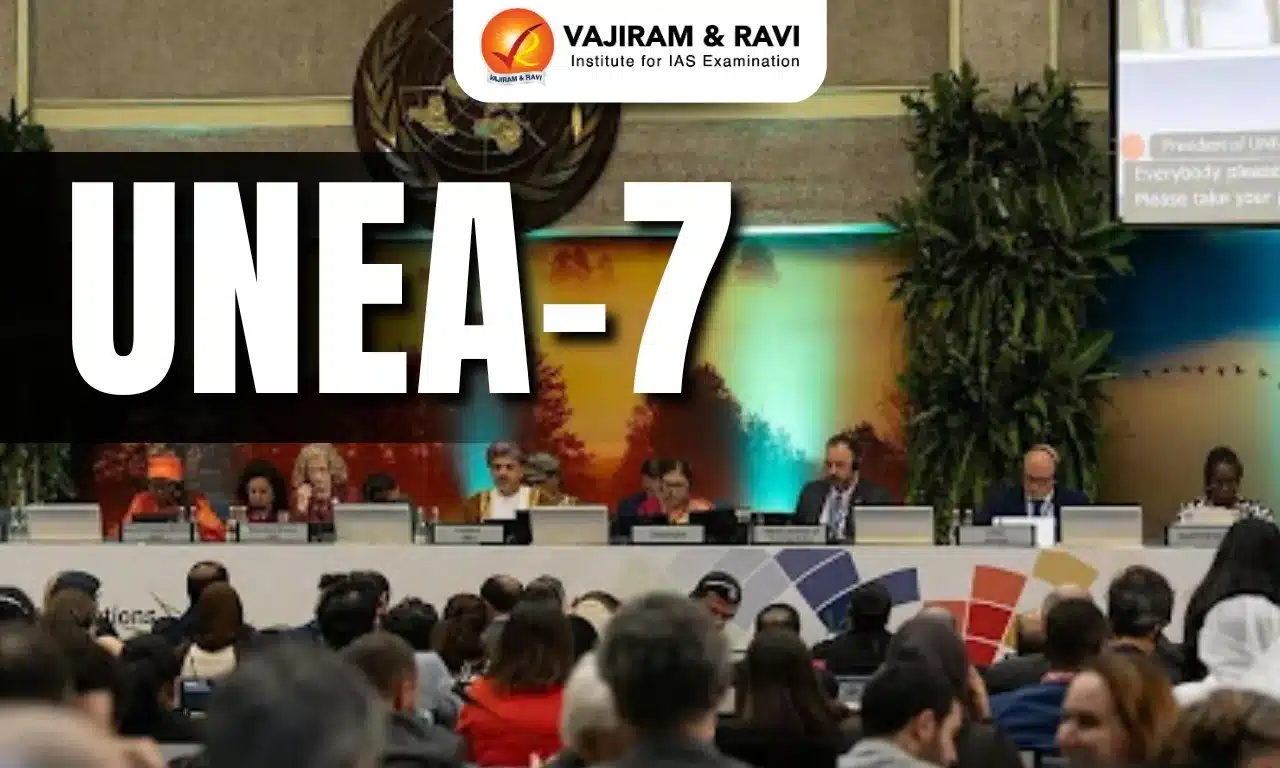What’s in today’s article?
- Why in News?
- What is the Special Category Status (SCS)?
- Why Bihar and AP Demanding SCS and its Feasibility?
Why in News?
- With the General Elections throwing up a fractured mandate, Nitish Kumar’s Janata Dal (United) and Chandrababu Naidu’s Telugu Desam Party are set to play a key role in government formation at the Centre.
- As a result, their past demands for special category status (SCS) for Bihar and Andhra Pradesh, respectively, are back in focus.
What is the Special Category Status (SCS)?
- Meaning: To be able to get the status, states have to fulfil the following requirements (based on Gadgil formula):
- They need to have hilly and difficult terrain.
- They need to have low population density and /or a sizable share of the tribal population.
- They must be in a strategic location along borders with neighbouring countries.
- They must be economically and infrastructurally backward.
- They must have a non-viable nature of state finances.
- Evolution of the idea of SCS:
- It was introduced in 1969 on the recommendations of the Fifth Finance Commission (chaired by Mahavir Tyagi) to benefit certain backward states.
- At that time, this was provided to Assam, Jammu and Kashmir and Nagaland.
- The idea of SCS was first formalised in April 1969 when the Gadgil formula of fund allocation was cleared by the National Development Council (NDC).
- On the basis of this formula, more states were given the SCS when they attained statehood.
- These include Himachal Pradesh in 1970-71, Manipur, Meghalaya and Tripura in 1971-72; Sikkim in 1975-76; Arunachal Pradesh and Mizoram in 1986-87 and Uttarakhand in 2001-02.
- It was introduced in 1969 on the recommendations of the Fifth Finance Commission (chaired by Mahavir Tyagi) to benefit certain backward states.
- Which states have the SCS?
- Currently, 11 states have the SCS in the country including Assam, Nagaland, Himachal Pradesh, Manipur, Meghalaya, Sikkim, Tripura, Arunachal Pradesh, Mizoram, Uttarakhand, and Telangana.
- Telangana, the newest state of India, is accorded the status as it was carved out of another state – Andhra Pradesh, which hit the state’s finances.
- Along with AP and Bihar, Odisha is another state demanding SCS.
- What benefits do states with SCS enjoy?
- Benefits to these states included getting Central assistance of as much as 90% in the form of grants and 10% loan for centrally sponsored schemes.
- For Non-SCS, the Normal Central Assistance was calculated as 30% grant and 70% loan.
- SCSs were also provided Special Plan Assistance for projects of special importance to the state.
- Further, unspent funds do not lapse at the end of the financial year.
- They also get tax concessions although many tax benefits have now been subsumed under the goods and services tax regime.
- Benefits to these states included getting Central assistance of as much as 90% in the form of grants and 10% loan for centrally sponsored schemes.
Why Bihar and AP Demanding SCS and its Feasibility?
- Bihar:
- Bihar has been asking for it ever since the mineral-rich Jharkhand was carved out of it back in 2000.
- Bihar has been ranked as the poorest state in India, according to the Centre’s Multidimensional Poverty Index (MPI) report.
- It is estimated to have nearly 52% of its population, without having proper access to requisite health, education and living standards.
- While the state meets most of the criteria for the SCS, it does not fulfil the criteria of hilly terrain and geographically difficult areas.
- AP:
- After its bifurcation in 2014, the then UPA government at the Centre had promised to grant SCS to AP to compensate for the loss of revenue and of Hyderabad, where much of the development was concentrated.
- Today’s AP is essentially an agrarian state, with low economic buoyancy, leading to huge revenue disabilities.
- SCS would mean higher grants-in-aid to the state government from the Centre. To illustrate, per capita grants to SCSs is Rs 5,573 crore per year, whereas AP receives only Rs 3,428 crore.
- Feasibility:
- According to the 14th Finance Commission, the SCS was a burden on the Centre’s resources and this has been used by the central government to reject SCS to more states.
- In order to plug the resource gap without extending SCS, tax devolution to states has been raised to 42% as recommended by the 14th FC and has been maintained by the 15th FC (41%).
- However, with the 16th FC already set up and working on the formula for tax devolution between the Centre and states for the five-year period starting April 1, 2026, granting special category status to these two states may be a simpler task.
Q.1. What is the National Development Council (NDC)?
The NDC is the apex body for decision making and deliberations on development matters in India, presided over by the PM. It was set up on 6 August 1952 to strengthen and mobilise the effort and resources of the nation in support of the Five-Year Plans.
Q.2. What is the Multidimensional Poverty Index (MPI)?
Traditionally, poverty is calculated based either on income levels or on expenditure levels. Globally, the MPI uses 10 indicators covering three main areas: health, education, and standard of living. These three dimensions have one-third weight each in the final index.
Source: Special category status for Bihar and Andhra Pradesh: Past demands come back in the limelight | DH | IE
Last updated on December, 2025
→ Check out the latest UPSC Syllabus 2026 here.
→ Join Vajiram & Ravi’s Interview Guidance Programme for expert help to crack your final UPSC stage.
→ UPSC Mains Result 2025 is now out.
→ UPSC Notification 2026 is scheduled to be released on January 14, 2026.
→ UPSC Calendar 2026 is released on 15th May, 2025.
→ The UPSC Vacancy 2025 were released 1129, out of which 979 were for UPSC CSE and remaining 150 are for UPSC IFoS.
→ UPSC Prelims 2026 will be conducted on 24th May, 2026 & UPSC Mains 2026 will be conducted on 21st August 2026.
→ The UPSC Selection Process is of 3 stages-Prelims, Mains and Interview.
→ UPSC Result 2024 is released with latest UPSC Marksheet 2024. Check Now!
→ UPSC Prelims Result 2025 is out now for the CSE held on 25 May 2025.
→ UPSC Toppers List 2024 is released now. Shakti Dubey is UPSC AIR 1 2024 Topper.
→ UPSC Prelims Question Paper 2025 and Unofficial Prelims Answer Key 2025 are available now.
→ UPSC Mains Question Paper 2025 is out for Essay, GS 1, 2, 3 & GS 4.
→ UPSC Mains Indian Language Question Paper 2025 is now out.
→ UPSC Mains Optional Question Paper 2025 is now out.
→ Also check Best IAS Coaching in Delhi

















